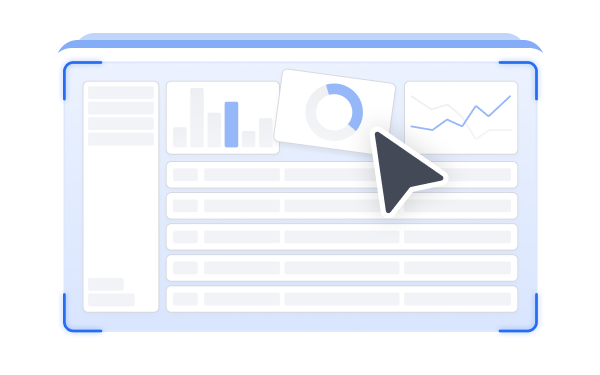The energy industry has recently seen a significant technological transformation, and the midstream oil and gas sector is no exception. The shift to cloud-based software solutions, or Software as a Service (SaaS), reshapes midstream companies' operations.
This change is driven by the need for more agile, scalable, and cost-effective solutions to tackle the increasing complexity of operations, regulatory compliance, data management, and operational efficiency.
Midstream companies, which play a crucial role in transporting, storing, and distributing oil and gas products, are recognizing the potential of SaaS platforms to improve their operations.
In this article, we’ll explore how SaaS transforms the midstream oil and gas sector and why companies should consider adopting these solutions.
#Why SaaS is Gaining Popularity in Midstream Oil & Gas
The adoption of Software as a Service (SaaS) in the midstream oil and gas sector is growing rapidly, driven by several factors that align with the industry's operational challenges and technological demands.
Here are some of the key reasons why SaaS is becoming increasingly popular in midstream sector:
Cost-effectiveness
One of the most compelling reasons midstream companies turn to SaaS is its cost-effectiveness. Traditionally, software and IT systems in the oil and gas industry required large capital investments in both infrastructure and software licenses. These systems often demanded significant upfront costs, which included hardware, installation, and maintenance, as well as ongoing support.
With SaaS, midstream oil and gas companies can avoid these hefty upfront investments. Instead of purchasing and maintaining expensive infrastructure, companies pay a subscription fee, which is often more predictable and manageable.
The cloud-based nature of SaaS also reduces the need for in-house IT staff and resources to manage and maintain systems, further reducing costs.
Scalability and Flexibility
The oil and gas industry, including midstream operations, often requires the ability to scale quickly based on operational needs. SaaS platforms provide the necessary scalability and flexibility to adapt to changing business conditions.
Whether a company is expanding its operations, launching new projects, or experiencing fluctuations in demand, SaaS allows for seamless scaling. For example, midstream companies can add new users, integrate additional functionalities, or extend their platforms without worrying about physical infrastructure limitations or costly software upgrades.
SaaS platforms are designed to grow alongside a business. The ability to quickly scale up or down is essential in an industry like oil and gas, where market conditions, project timelines, and regulatory environments can change rapidly. This flexibility ensures that midstream companies can respond to demands without investing heavily in new infrastructure.
Automatic Updates and Security Patches
Keeping software up to date is crucial for both performance and security, particularly in high-risk industries such as oil and gas. With traditional on-premise solutions, manual updates are often required, which can be time-consuming and lead to potential security vulnerabilities if updates are missed.
One major advantage of SaaS is that it automatically handles updates and security patches. SaaS providers ensure that their platforms are always running the latest versions, including new features, performance improvements, and important security patches. This reduces the burden on internal IT teams and ensures that midstream oil and gas companies are always protected from evolving cyber threats.
Data security is a top priority due to the sensitive nature of operations, having automatic updates and patches is crucial. SaaS providers typically follow stringent cybersecurity best practices, and many are ISO-certified or adhere to industry-specific standards, ensuring that both company and customer data are well protected.

#Key SaaS Applications in Midstream
SaaS platforms have proven to be a game-changer for midstream companies, enabling more efficient and data-driven operations.
Below are the key SaaS applications that are transforming midstream oil and gas operations:
Pipeline Monitoring
This is critical as pipelines are vital for transporting oil and gas products safely and efficiently. SaaS-based pipeline monitoring solutions leverage real-time data, advanced sensors, and machine learning algorithms to provide operators with continuous oversight of pipeline conditions.
SaaS platforms allow midstream companies to monitor pipeline integrity and performance 24/7. Sensors installed along pipelines track factors such as pressure, temperature, flow rates, and potential leaks.
With automated alerts for unusual pipeline behavior, SaaS solutions can instantly flag potential issues like leaks, corrosion, or mechanical failures. Early detection helps prevent environmental damage and reduces downtime.

Predictive Maintenance
This is one of the most impactful applications of SaaS in midstream oil and gas. By using data analytics and machine learning, SaaS platforms can predict when equipment or assets are likely to fail, enabling midstream companies to perform maintenance proactively rather than reactively.
SaaS solutions can integrate with IoT devices and sensors embedded in equipment (such as pumps, compressors, and valves) to collect real-time performance data.
The software analyses historical and real-time data to identify patterns and predict potential failures or malfunctions. This allows for timely intervention before an asset breaks down.
Based on predictive insights, the platform helps schedule maintenance activities during low-impact periods to minimize disruption to operations.
Compliance Management
Midstream oil and gas companies operate in a highly regulated environment, with strict requirements for environmental, safety, and operational standards. SaaS-based compliance management solutions help companies stay on top of these regulations and maintain up-to-date records for audits and reporting.
SaaS platforms can automatically generate reports required by regulatory bodies, reducing the manual effort involved and ensuring timely compliance with regulations.
These platforms can store and organize documentation related to permits, inspections, safety records, and more, ensuring that all compliance documents are easily accessible for audits or inspections.
SaaS solutions offer dashboards that show the current compliance status of various assets and operations, making it easier for managers to identify and address compliance gaps.
#Security Concerns & How SaaS Providers Ensure Data Protection
As midstream oil and gas companies increasingly adopt Software as a Service (SaaS) solutions, concerns around data security and protection are paramount. Given the sensitive nature of the industry, midstream companies need assurance that their data is secure and compliant with regulatory requirements.
Data breaches can lead to unauthorized access to sensitive information, including operational data, financial records, and intellectual property.
SaaS providers implement strong encryption methods, both during data transit (via TLS/SSL protocols) and at rest (using AES-256 encryption). This ensures that sensitive data is unreadable to unauthorized parties.
The risk of data loss or inaccessibility is a critical concern. Data could be permanently lost or inaccessible in the event of hardware failure, natural disasters, or system downtime, leading to significant operational disruptions.
Leading SaaS providers maintain multiple copies of data in geographically diverse data centers to ensure redundancy. These backup systems protect against data loss caused by hardware failure, system crashes, or disasters.
Midstream companies face the ongoing threat of cyberattacks, such as ransomware, phishing, and denial-of-service attacks, which can disrupt operations, steal data, or cause financial loss.
SaaS providers implement enterprise-grade firewalls, intrusion prevention, and detection systems (IPS/IDS) to defend against unauthorized access and cyberattacks.
#Challenges of Adopting SaaS and How to Overcome Them
While Software as a Service (SaaS) offers numerous advantages, its adoption in the midstream oil and gas sector comes with challenges that companies must address to leverage its potential fully.
Many midstream oil and gas companies operate on legacy systems and traditional on-premise solutions that may be incompatible with modern SaaS platforms. Before selecting a SaaS provider, assess the platform's compatibility with existing legacy systems.
With SaaS solutions, sensitive operational data is stored off-site in the cloud, raising concerns about data security, privacy, and compliance with industry regulations. Ensure that the SaaS provider has a strong track record in security and compliance. Look for certifications and adherence to industry-specific regulations for energy companies.
Midstream oil and gas operations often take place in remote or offshore locations where internet connectivity may be limited or unreliable. Select SaaS providers that offer offline capabilities or hybrid solutions. Some SaaS platforms allow users to work offline and sync data once a stable connection is restored.
#Conclusion
Adopting Software as a Service (SaaS) transforms the midstream oil and gas sector. SaaS platforms offer unparalleled flexibility, scalability, and cost-effectiveness.
These cloud-based solutions allow midstream companies to harness the power of data, streamline operations, and improve decision-making, all while minimizing upfront capital expenditures and ongoing IT management costs.
SaaS is helping companies overcome traditional barriers like system integration and data accessibility, enabling them to unlock the potential of advanced technologies such as machine learning, AI, and IoT.
By leveraging SaaS, midstream companies can optimise their current operations, drive innovation, and stay competitive in a rapidly evolving industry.




